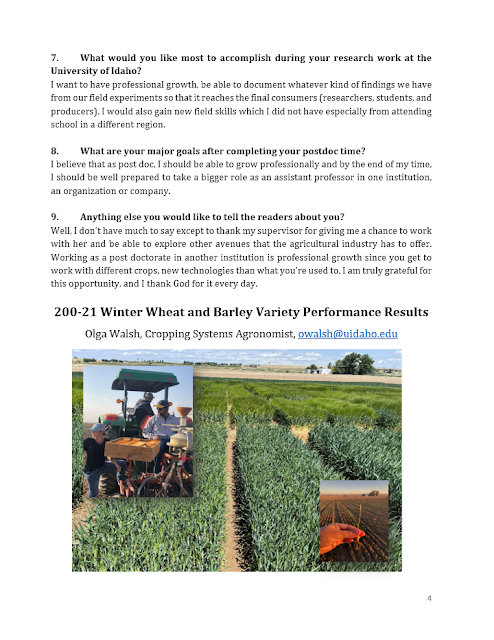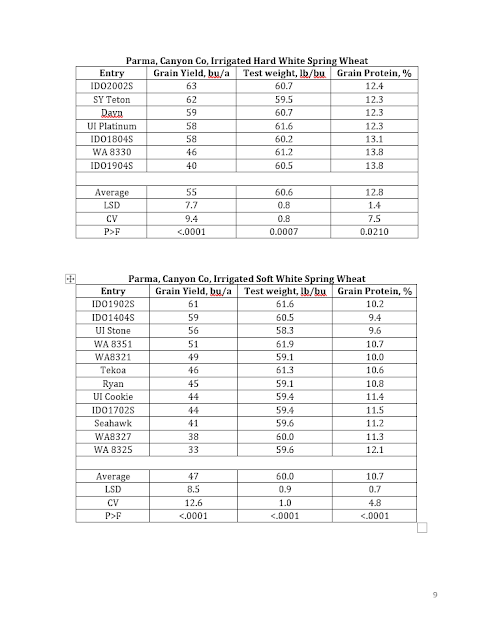Pages
- HOME
- ABOUT
- SCHOLARLY PUBLICATIONS
- RESEARCH
- TEACHING & MENTORING
- EXTENSION & OUTREACH
- SERVICE
- UI Parma Agronomy Program
- Idaho Crops & Soils Newsletter
- Southwest Idaho Cereals Program
- Nutrient 4Rs
- Soil Health
- University of Idaho AgTalk Tuesdays
- Western Ag Variety Explorer - WAVE
- UAV for Fruit Tree Monitoring
- Micronutrients for Wheat
- Precision Irrigation for Hops
- Water and Soil Management for Beans
- Nitrogen and Water Management for Sugar Beets
- Water and Nutrient Footprint of Pulse Crops
- PLSC 500 - Master's Research & Thesis
September 15, 2021
Varietal Response of Wheat and Barley to Nitrogen
The University of Idaho researchers and extension specialists are collaborating on a state-wide project to support the development and adoption of technologies that transform nutrients in dairy manure into commercial fertilizers and manure-based bioproducts. Updating nutrient management recommendations for Idaho crops (including wheat and barley) and evaluating the long-term effects of nitrogen fertilizers and newly developed manure-based bioproducts on soil carbon, nitrogen, and phosphorus levels plus soil health (e.g., microbial biomass, organic matter content, and soil carbon content) are among the key objectives.
Teff is a reliable low-risk crop. It is relatively resistant to biotic and abiotic stresses and can be grown under moisture stress or waterlogged conditions. Its short production cycle makes it useful as a rescue or catch crop in areas with limited water availability when perennials have failed. Growing teff as a double crop, green manure crop, cover crop or even an emergency crop when the unfavorable weather conditions delays planting of other grain crops is an excellent option. Teff is often grown as an economically viable rotational crop that’s compatible with a variety of commodity crops.
Though teff has been successfully grown in Idaho since the 1980s, more research and education on its breeding and management are needed. Mechanization is required to minimize grain loss at harvest and handling. The Cropping Systems Agronomy program at the University of Idaho, Parma, is excited about future collaborative research focusing on nutrient and water management for teff, as well as variety evaluation.
September 03, 2021
Subscribe to:
Comments (Atom)












